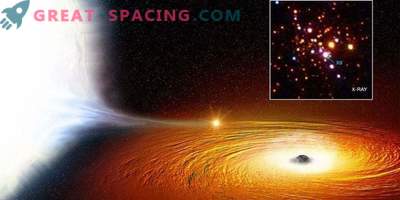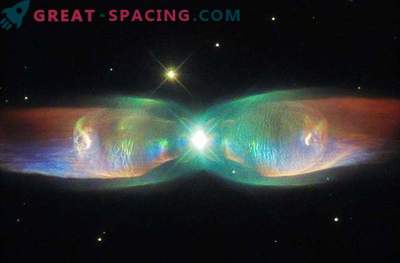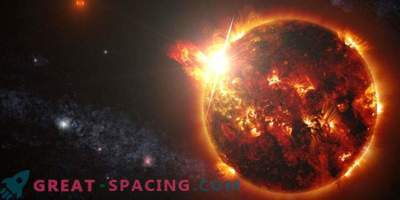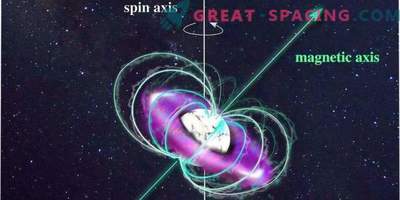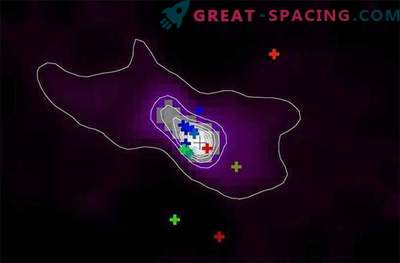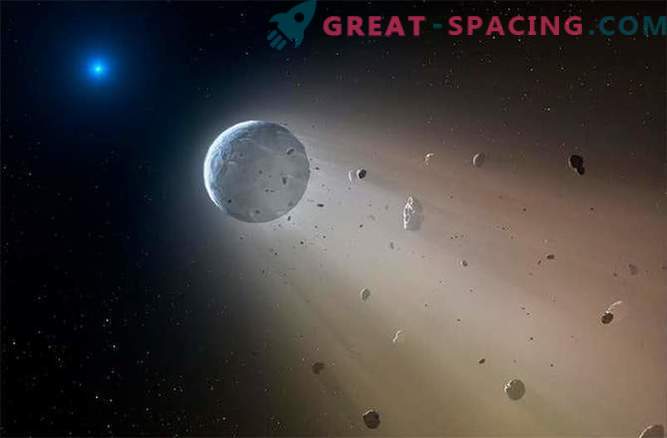
Any crime has evidence, thanks to it we will know who and how committed it. This is also true for cosmic-scale “crimes”, especially when one of her own stars is tearing apart a planet.
While observing the white dwarf WD 1145 + 017, astronomers under the direction of Andrew Vanderberg (Andrew Vanderburg) from Harvard-Smithsonian University of Astrophysics (Cambridge, Massachusetts) noticed several planetary fragments in orbit. They were discovered by the Kepler space telescope (now it is located on the “K2” flight site), the total mass of these fragments is supposedly equal in size to the giant Ceres asteroid, which is located in the main asteroid belt of our Solar System.
These small planetary fragments have an orbit of 4.5 to 4.9 hours in size and are too small to be seen separately. However, their presence made itself felt when the researchers saw huge clouds of dust, which tail trailed behind them. During subsequent monitoring, ground-based observatories were used to find out what elements this fragment group consists of.
Traces of dust that complement the debris disk around WD 1145 + 017 are composed of magnesium, aluminum, and silicon. It is these elements that are evidence of a “planetary killing” committed by a white dwarf: they are part of a small stone planet that is currently being torn to pieces and crushed into dust. For the first time, a white dwarf was “caught red-handed” right during the destruction of its planetary system. “This has not yet been seen by the human eye,” Vanderberg says in the news of his university. “We are watching the destruction of the solar system.”
A white dwarf is formed after the main sequence of a star like our Sun runs out of fuel. The star swells, becoming a red giant, and then with an explosion gets rid of the outer layers, turning them into stellar wind. The resulting planetary nebula leaves behind a small white dwarf.
Life near the white dwarf for the planets withstood the explosion is very harsh. If a planet or an asteroid flies too close, the star’s intense impact can destroy any rocky body, leaving behind it a dusty plume of destruction.
Heavy elements like those that were found around WD 1145 + 017 should be pulled to the star rather quickly - according to astronomers, they have a short “rest time” - it means that these elements in orbit indicate that they were there quite recently ( over the last million years). It also follows from this that the destruction of a rocky planet (or planets) is underway right now.
Surrounded by clouds of dust, white dwarfs have become the object of research before, indirect evidence that this dust was once a planet is also known. However, for the first time in the orbit of a white dwarf a planetary body was found in the process of its destruction.
“Now we have clear evidence that connects the pollution of white dwarfs with the destruction of the stony planets,” adds Vanderberg. Studies of white dwarfs surrounded by dust not only reveal the ferocious essence of stellar environs, but also provide an opportunity to look into the ominous future of our solar system.
When our Sun consumes all of its energy in about 5 billion years, it will also swell up to a red giant, then a destructive explosion will follow, after which a tiny white dwarf will remain. If any inner planet of the solar system survives this, then its orbit is likely to destabilize, the planet will reach the “Roche limit” (the minimum distance that the orbital body can approach the star before it breaks it apart). Although the outer planets can avoid such a fate (if they are thrown back into interplanetary space), everything else will turn into “ruins”, into a relic of its stable past.
The earth, the charred and lifeless version of itself in antiquity, yielding its fate, will eventually be thrown into dust, and its remains will be scattered around the atmosphere of a white dwarf.


